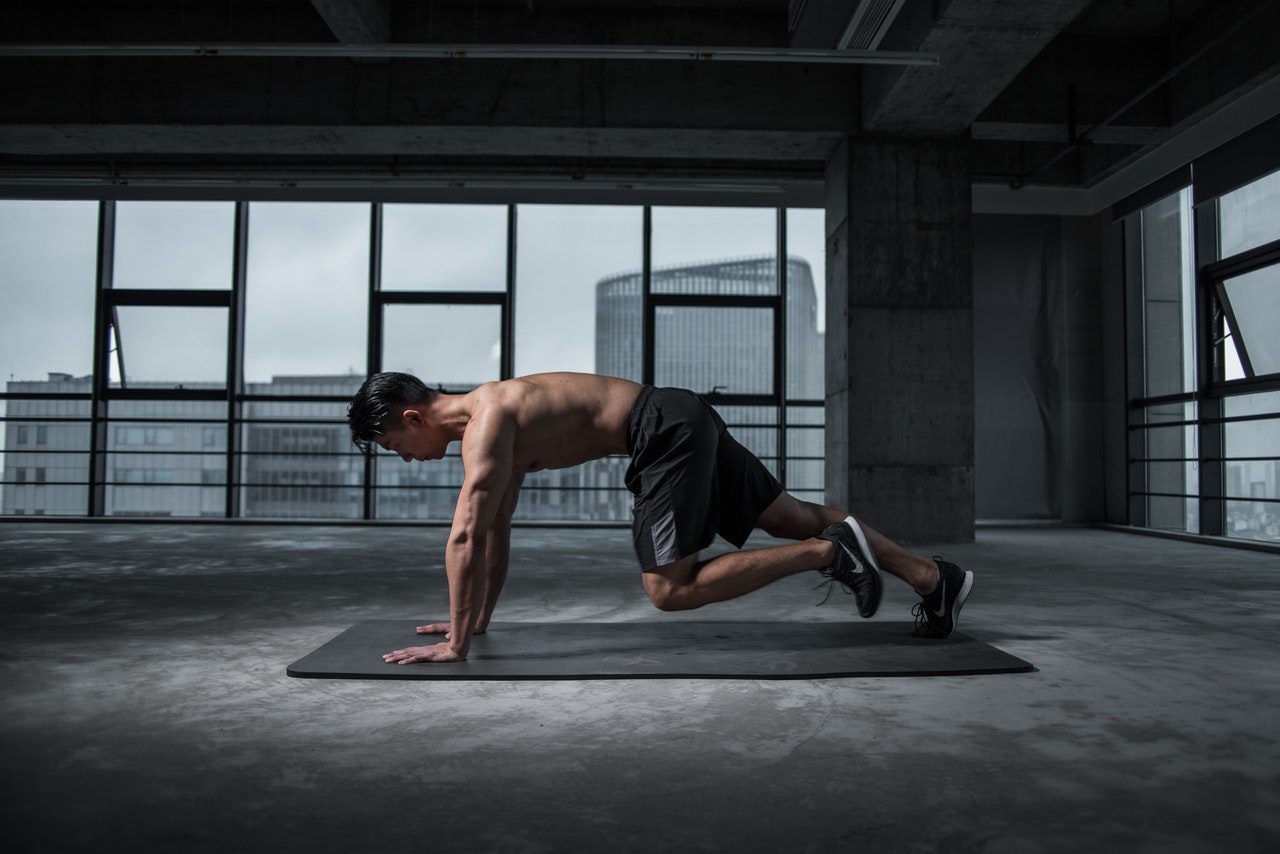
The best online fitness resource you'll ever need. We filter out the BS to ensure you meet your health and fitness goals!

The best online fitness resource you'll ever need. We filter out the BS to ensure you meet your health and fitness goals!

Ramadan has come around, the days are long and hot, you are having to fast all day long, going without food or water between sunrise and sunset, and your workout… well, you let it go. The temptation is too strong, and you turn your back on it, forgoing your fitness goals for the month.
Many people do this, and it makes sense: however, it needn’t happen like this. There is no need at all to stop taking regular exercise during Ramadan.
In fact, health, fitness and training goals can go incredibly well with fasting, as anybody who regularly runs an intermittent fasting (IM) protocol will tell you. As long as you choose your goals, fitness plan and nutritional intake well, you can make some substantial progress as you run your fast- though your training will likely end up looking quite a bit different to usual.
You need to change the way you think about Ramadan at the outset if you believe that it’s unhealthy to exercise whilst fasting. Many people fall into this trap and believe this myth.
The reverse is true: exercise and fasting protocols can go hand in hand. You may actually find some unintended benefits from fasting. During a fast, several things happen to the human body at the molecular and cellular level. Hormonally, it adjusts to make fat stores more readily available. Cells also initiate repair processes and gene expression that don’t happen when the body is digesting nutrients.
Many people look to mere survival during Ramadan. Simply get your head down, get through it, and return to normalcy at the end of the month. However, it can be seen as an opportunity: spiritually, of course, but also in terms of your physical health and fitness goals.
So, how can a Ramadan diet plan help you achieve your fitness goals?
Remember, Ramadan only restricts when you can eat and drink, not what you can eat and drink. If you already have a balanced, healthy diet, filled with fruit, vegetables, lean protein sources and healthy fats, you don’t have too far to go. Simply parcel it out sensibly, making sure that you get a good dose of slow burning carbs at each meal, alongside adequate protein to help you recover, and drink plenty: dehydration can be a killer during Ramadan.
At its heart, Ramadan is simply a form of IM, which can bring a great many positive changes to your body. Some of the changes that occur include:
Though you’ll not be able to push yourself as hard as usual, given the lack of energy and adequate hydration that often occurs during the Ramadan fast, fat loss will become easier due to the above effect. IM is almost tailor made for it. The increased HGH output, gene expression and cell repair will also help you to bounce back faster from training: you will recover more efficiently and possibly even build a little more muscle than usual.
Because of all of this, it’s well worth hitting a cutting phase during Ramadan, seeking to make the most out of its fat-burning potential by maintaining fat loss as your primary goal. A daily caloric deficit of 500-1000 (easy to manage with such a slim window for eating) combined with light cardio and resistance training will help to get you lean incredibly quickly and efficiently. We’ll go through this in a little more detail below, showing you how you can use the Ramadan fast to aid in weight loss.
Nutrient timing is also important during Ramadan, and you will want to place different emphasises on the foods included in your suhoor and iftar. For suhoor, go for those longer lasting, complex carbs, mixed with high fibre ingredients and good quality protein like lean meat or fish. This will keep you energised for longer and will give you a feeling of satiation throughout the day. Drink plenty and go for fruit juices and isotonic drinks instead of teas and coffees that will act as diuretics. For iftar, keep it traditional and break your fast with dates and water. This will help to boost your electrolyte and sugar levels, whilst rehydrating you and giving you a refreshing treat at the end of a long day. Dates are easy to digest, lead to direct satiation, keep your bowel movements regular and prepare your stomach for a more substantial meal. After the dates, go with high protein and fatty foods to give your body everything it needs to repair and heal overnight.

Exercise timing will also be important during Ramadan. You will not be able to hit the gym whenever you fancy it, and you won’t be able to spend hours training. Nutrient timing and intake simply won’t allow it.
Rather, go for shorter workouts (30-45 minutes per day). Time these to occur just after sunrise, when you will have just eaten breakfast. At this point, you will be relatively well fed from your pre-dawn meal, and you will also be fully hydrated. Alternatively, go for late afternoon, shortly before sunset. You will be able to break your day’s fast immediately afterwards, allowing you to hydrate properly and make the most out of your evening meal to fill your body with nutrients straight away.
The type of training you take part in will also be key. Hard core training is out. Avoid high intensity exercises, including anything that takes your heart rate above around 150bpm. This will mean you write off HIIT, hard weight training, sprinting, and aerobically challenging sports like boxing.
Instead, there are certain styles of exercise that lend themselves really well to being conducted during a low energy, fasted state. Walking, light jogging and gentle swimming are perfect, and weight training to higher reps, with plenty of reps between sets will also be OK.
Alternatively, yoga (especially gentler styles like Yin or Hatha Yoga) Pilates and calisthenics are perfect. They will each allow you to keep your heart rate relatively low, whilst working a full range of muscles, improving core strength and flexibility, and giving you some well-needed peace of mind during the struggle that long bouts of fasting represent. They are also incredibly convenient: you will only need a yoga mat or soft carpet, your body, and a few follow-along YouTube videos (of which there are abundant).
As mentioned above, a Ramadan fast only restricts when you eat, not what you eat. However, you shouldn’t take this as a cue to eat whatever you fancy when the sun goes down. If you want to hit your fitness goals, you need to keep it as clean as ever.
This can be hard. Willpower will be low during the month of Ramadan, as those long days drag out without food or water, and your body will start craving fast release energy. It will want sugary treats and fatty foods. Fasting can also come with some nasty side effects, especially in the presence of dehydration, including:
However, you will want to stay strong: the benefits will be worth it. Take your calories from lean proteins, healthy fats like oily fish, avocadoes and seeds, and from slow release carbohydrates like oats and rice. Try to get in as much protein as possible if you do continue to train: this will help to mitigate atrophy or even bring about hypertrophy.
Overall, there are four main things to bear in mind when structuring your Ramadan diet. To succeed in your health and fitness goals by properly planning out your lifestyle and food intake, simply:
You will only be able to eat twice per day, during suhur and iftar, so make sure you get them right. We went through this briefly above, but it’s worth paying a little more attention to.
Suhur, the first meal of the day, can be challenging. Though it may be hard to get up early, before the crack of dawn, and force yourself to prepare and eat healthy food, you have to. If you don’t, you will be starving by the end of the day. This means you will be more likely either to break your fast too early, and to overindulge in poor quality, high sugar, high fat processed foods. You will also be functioning sub-optimally all day as your body struggles on with no energy.
For a decent Suhur, there are some golden rules to follow. First, don’t drink tea or coffee. The caffeine they contain is a bad idea during Ramadan: the energy crash will be far greater than usual, given the lack of glucose and subsequent caffeine through the day, and they will make you more dehydrated. Also, don’t take in too much salt, as this too will lead to dehydration.
Go for a good mix of carbs and protein.
Iftar, your night-time meal, will also benefit from following a couple of rules. Firstly, don’t break your fast with anything too heavy. You will be energy depleted, but don’t binge. Going too heavy on iftar may cause you gastric and digestive distress.
Eat iftar over a couple of courses, beginning with something light. Break your fast the traditional way, with dates and water, to avoid this and to keep your trips to the bathroom regular and healthy. However, only go for one to two dates, as they are high in sugar and dense in calories.
Then, follow with a balanced, good range of food sources taken in moderation. Broths and soups made with vegetables like lentils will be best. Avoid creamed soups, as they may be too rich for your stomach after a full day’s fast.
Finally, after a bit of a break to help stabilise your blood sugar, go for your proteins. Lean meat like chicken, or else eggs or dairy, will be perfect alongside some mixed carbohydrate sources.

You want your calories to last you as long as possible, given how long you will be having to fast throughout the day. You will also want calories that will aid in hydration. This means going for complex carbs. Glycogen will allow you to store more water throughout the day, and complex carbs that are harder to break down will last longer
In addition, keep fibre heavy foods like fruit and grains in your diet in large supply. These will aid in satiation, improve digestion, and will once more allow for better hydration throughout the day.
Protein is also slow release, so should feature prominently in both meals.
For the morning, dairy dishes like high-protein yoghurt mixed with fruit and oats would be perfect, combining fast and slow release carbs, lots of fibre, and plenty of protein. Perhaps finish off with a protein powder smoothie with added bran.
This is the most important thing on the list. Make sure you drink plenty, especially if you live in a hot country, and make sure you keep caffeine intake and early morning salt intake down, as above. Make use of electrolyte or isotonic drinks, especially in the evening as you break your fast. In the morning, try drinking full-fat milk: the protein content will lead to more efficient water absorption, and the fat will give you some slow releasing calories. It may be a good idea to incorporate this into your protein shake itself.
Aside from keeping you hydrated, drinking plenty in the morning (a litre or so as a rough estimate) will help to keep your appetite sated and will minimise your sugar cravings. It will contribute to longer lasting energy and will keep your digestive system functioning optimally.
There we have it: there is no reason to quit training during Ramadan. Though your exercise regime may look a little different to normal, you can still get plenty in: just remember to enjoy lower intensity workouts and keep your heart rate to the mid-range. The Ramadan fast can be tough, but there are ways to make it work for you, by simply getting your diet right. And, as we have seen, there are some fantastic health benefits to be had from regular periods of IM.
Just remember to keep hydrated, stay safe, and stay strong: the rest will follow naturally.